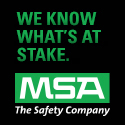By Bruce Rolfsen
With the bill allowing OSHA to increase its maximum penalties for the first time since 1990 signed into law Nov. 2 by President Barack Obama, the clock is ticking toward the Aug. 1, 2016, deadline to raise penalties.
The provision raising OSHA fines was included in the budget agreement (H.R. 1314) negotiated in private by Republican and Democratic lawmakers and passed by Congress during the last week of October (208 OHD 208, 10/28/15).
OSHA officials face several decisions before increasing penalties, including whether to raise maximum fines by the full amount allowed by Congress.
OSHA declined a Bloomberg BNA request on Nov. 2 to discuss how the agency will implement the law, other than a spokesman saying the agency continues to "study the path forward."
‘Serious Obstacle' Gone
In October, OSHA administrator David Michaels was clear in his support for raising maximum fines, a stance he repeated several times since taking the post in 2010 (147 OHD, 8/3/10).
"The most serious obstacle to effective OSHA enforcement of the law is the very low level of civil penalties allowed under our law, as well as our weak criminal sanctions," Michaels told a House subcommittee on Oct. 7.
"For example, the Environmental Protection Agency can impose a penalty of $270,000 for violations of the Clean Air Act and a penalty of $1 million for attempting to tamper with a public water system," Michaels said. "Yet, the maximum civil penalty OSHA may impose when a hard-working man or woman is killed on the job—even when the death is caused by a willful violation of an OSHA requirement—is $70,000."
Overturning Doubtful
At the U.S. Chamber of Commerce, Marc Freedman, the Chamber's executive director for labor law policy, doubted any legislative action will block the increase.
"The likelihood of the OSHA fines increasing would appear to be 100 percent—Congress is directing the agencies to do so," Freedman told Bloomberg BNA Nov. 2.
Since raising the penalties is a statutory mandate, Freedman said, he doesn't see an appropriations bill rider being an effective way to block the increase, even assuming such a rider could be included in the fiscal year 2015 omnibus appropriations bills still to be written by Congress.
Freedman added that the Chamber will be following the rulemaking process for raising penalties, watching for OSHA attempts to use the rulemaking to accomplish goals the law doesn't specify.
Catch-Up From 1990
The law allows OSHA to make a one-time "
catch up" increase
to compensate for more than two decades of no increases. The catch-up increase can't exceed the inflation rate from
fiscal year 1990 through
fiscal year 2015 as measured by the federal government's Consumer Price Index (CPI).
After the one-time "catch-up" increase is implemented, OSHA will annually increase maximum penalties the amount of the inflation rate for the prior fiscal year.
If OSHA was to choose the greatest catch-up increase allowed—about 82 percent according to the CPI—the maximum $70,000 fine for repeat and willful violations would grow to $125,438, and the $7,000 maximum fine for serious violations $12,744.
Had OSHA had been able to apply the 82 percent increase to its fiscal year 2014 fines of $143.6 million, penalties would have reached $261.4 million.
OSHA's budget won't directly benefit from higher fines, an OSHA spokesman said. The penalty dollars continue to pay for all government operations, not just OSHA.
All or Something Else?
Just how high the catch-up increase could go is something that could be debated in coming months.
"The American Society of Safety Engineers has supported increased penalties in the context of more comprehensive OSHA reform but has not taken a position on what level of fines would be most effective," David Heidorn, government affairs manager for the society, said to Bloomberg BNA Nov. 2.
Heidorn said there is concern that the law allowing the increases "comes out of a late-night political process."
"Much more effective would be a thoughtful, open dialogue based on effectiveness research that could help determine
penalty, enforcement and cooperative strategies that allow OSHA to better aim its resources at the employers and workplaces who do the worst job of protecting workers," Heidorn said.
If OSHA raises maximum fines as high as the law allows, the change doesn't mean the agency will select the maximum option each time an employer is cited, former OSHA chief of staff Deborah Berkowitz told Bloomberg BNA Nov. 3.
"OSHA is very judicious in how it uses penalties," Berkowitz said. Although, the maximum serious penalty is $7,000 for each violation, the average proposed serious penalty is about $2,000.
Berkowitz, now a senior fellow for worker safety and health with the National Employment Law Project, said OSHA will continue to reduce fines based on such factors as an employer's "good faith" efforts and the number of employees.
Aaron Trippler, director of government affairs the American Industrial Hygiene Association, said higher fines could lead to calls for area directors to have more leeway in mitigating penalties, such as giving employers the right to fix nonserious hazards without being cited.
"With fines now having a higher cap, the discrepancy between area directors could be much larger, creating some problems," Trippler told Bloomberg BNA Nov. 3. "If OSHA is to provide area directors with more options, the agency needs to assure employers and workers that area directors are treating similar cases across the country in a similar way."
Raising Rulemaking
Before maximum fines increase, the law lays out steps OSHA and the White House's Office of Management and Budget need to take.
First, OMB must issue guidance by Jan. 31 on implementing the bill's provisions.

 2300 Wilson Boulevard, Suite 300 · Arlington, VA 22201 · 703-548-3118 (phone) · 703-548-3119 (fax) · www.agc.org
2300 Wilson Boulevard, Suite 300 · Arlington, VA 22201 · 703-548-3118 (phone) · 703-548-3119 (fax) · www.agc.org
 13 Steps to Improve Workplace Safety Amid Influx of New and Inexperienced Workers
13 Steps to Improve Workplace Safety Amid Influx of New and Inexperienced Workers


 Grab your hats, don your boots, and join your fellow construction industry professionals at the 97th Annual AGC Convention, March 9-11, 2016, at the Grand Hyatt San Antonio. As our premier event each year, the AGC Annual Convention and Technology & Construction Solutions Expo is the ideal opportunity to see everything AGC can do for you and your business. Join us for more than 15 education breakouts, terrific networking events and industry leading speakers, all in a perfect location for business, culture, family and fun ... San Antonio.
Grab your hats, don your boots, and join your fellow construction industry professionals at the 97th Annual AGC Convention, March 9-11, 2016, at the Grand Hyatt San Antonio. As our premier event each year, the AGC Annual Convention and Technology & Construction Solutions Expo is the ideal opportunity to see everything AGC can do for you and your business. Join us for more than 15 education breakouts, terrific networking events and industry leading speakers, all in a perfect location for business, culture, family and fun ... San Antonio.